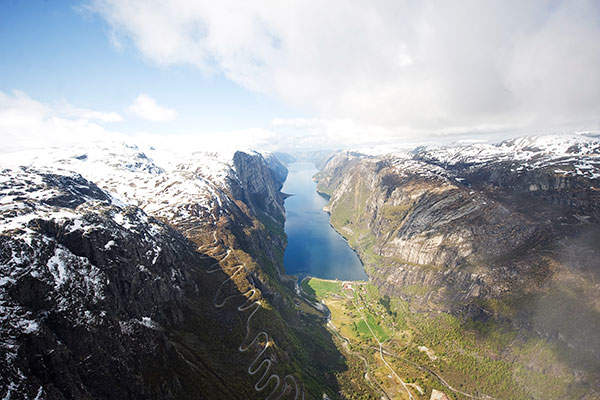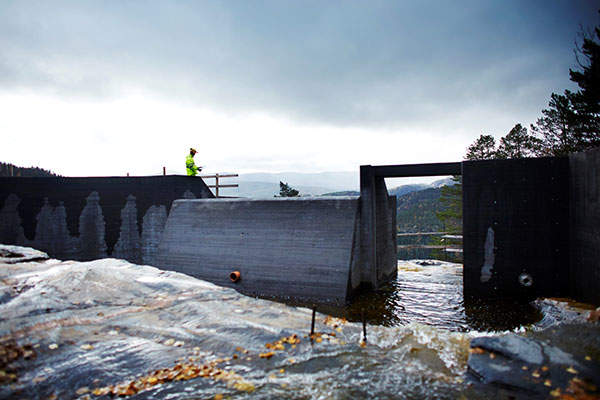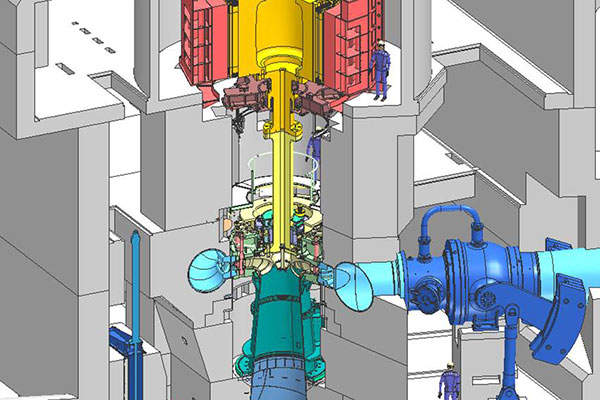Lyse Produksjon is replacing the existing 210MW Lysebotn hydropower plant in Norway with a new 370MW power plant named Lysebotn II, which is expected to be one of the biggest hydroelectric power plants in Norway when completed in 2018.
The Lysebotn II power plant is expected to produce an average of 1.5TWh of electricity a year using the existing plant’s water basin and reservoir. The annual production capacity of the existing plant is 1.32TWh.
Norwegian water resources and energy directorate (NVE) approved the hydropower project in May 2013. Final permits for the project were issued by the county governor in May 2014. Construction of the access tunnel to the power station began in May 2014, and the project is expected to begin operation in early 2018.
Lysebotn II hydropower plant details
Havøygavlen, the world’s most northerly windmill park, has an annual output of around 120GWh.
The existing Lysebotn power project features six horizontal Pelton turbines, including three 30MW and three 40MW units. Since becoming operational between 1953 and 1964, these turbines have produced more than 63TWh of energy.
The new Lysebotn II project is being developed in the inner part of Lysefjorden, which is approximately 60km from Stavanger by boat. It will have a catchment area of 315.8km² and will consist of a surge chamber, tailrace and access tunnels, plus a transformer cavern.
The project will comprise an underground power station with a new tailrace tunnel and the headrace tunnel connected to the plant’s two intake reservoirs, Strandvatn and Lyngsvatn.
The project also includes the construction of a new underground waterway system between Lyngsvatn and Strandvatn, and an access tunnel at Strandvatn. The access tunnel to the power station will be approximately 1.5km-long, while the drainage tunnel to the sea will be about 1.2km-long.
Lysebotn II power plant make-up
The Lysebotn II hydropower project will include an underground power station featuring two 185MW Francis vertical-shaft turbines.
Each turbine can manage a gross head of 665m, has a voltage rating of 13.8kV and operates at a speed of 600rpm. The runner of each turbine will have a diameter of 2,550mm.
Lysebotn II construction
Preparatory works at the Lysebotn II site started in mid-2013 and were completed in April 2014. Major works completed during this period were the first 30m of the access tunnel to the power plant, a temporary pathway down to the sea and a 30m-long concrete culvert adjacent to the access tunnel.
The construction works will also include shafts for intakes at both Strandvatn and Lyngsvatn, an intake gate at Strandvatn and a waterway between Lyngsvatn and Strandvatn. A short vertical-pressure shaft will be constructed between the inflow tunnel and the pressure tunnel.
The main civil works will include the construction of a new tunnel, parallel to the existing transfer tunnel, surge tunnel at Strandvatn and the expansion of the existing 132kV switchyard.
Contractors involved with the hydroelectric project development
Implenia was awarded the contract for the construction of the Lysebotn II hydropower station in October 2013.
Austrian based company Andritz Hydro was selected by Lyse Produksjon for the supply of electromechanical equipment for the plant. The contract also includes the supply of two 185MW Francis high-pressure turbines, two generator units, hydraulic steelwork and steel linings.
ABB was contracted to supply two 215MW power transformers and associated gas-insulated couplings.
Norconsult was engaged for design services, preparation of tender documents and follow-up during the construction. It is also responsible for the engineering geological feasibility study, stress analysis for the placement of unlined pressure tunnel and the preliminary design of the underground power station and connected tunnels.






